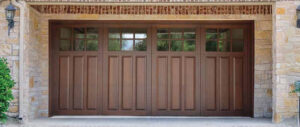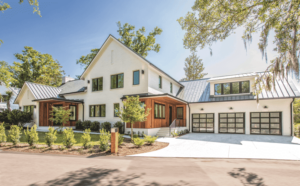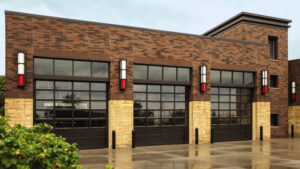When it comes to garage doors, the type of spring you choose plays a big role in performance, durability, and safety. If you’re trying to decide between a torsion spring vs extension spring, understanding the differences will help you make the right choice. Let’s break it down so you know which option is best for your garage door!
What Are Garage Door Springs?
Garage door springs are responsible for counterbalancing the weight of the door, making it easy to open and close. Without them, your garage door opener would struggle, or you’d have to manually lift a very heavy door.
The two main types of garage door springs are torsion springs and extension springs. While they serve the same function, they operate in very different ways.
Torsion Spring vs Extension Spring: The Key Differences
1. How They Work
- Torsion Springs: These springs are mounted above the garage door and use torque (twisting force) to lift and lower the door. When the door moves, the spring coils and uncoils to create balance.
- Extension Springs: These are installed along the sides of the garage door and stretch when the door is lowered. When the door is lifted, the springs contract, helping to raise it.
2. Lifespan & Durability
- Torsion springs generally last longer, typically between 15,000 to 20,000 cycles (one cycle = opening and closing the door once).
- Extension springs have a shorter lifespan, usually around 10,000 cycles.
- If you use your garage door multiple times a day, this can have a big impact on how often you need replacements.
- Torsion springs are designed to be more robust, while extension springs experience more wear due to stretching and contracting.
3. Safety
- Torsion springs are considered safer because they are mounted on a shaft and are less likely to snap dangerously if they break.
- Extension springs, when they break, can fly off and cause damage or injury unless they have safety cables installed.
- The sudden snapping of an extension spring can create significant hazards, especially if the door is in motion.
- Torsion springs, while still capable of breaking, are contained in a way that reduces risk.
4. Smoothness of Operation
- Torsion springs provide a smoother and more controlled motion when opening and closing the door.
- Extension springs tend to create a more jerky movement, which can lead to uneven wear over time.
- The smoother operation of torsion springs also leads to reduced strain on the garage door opener.
- Uneven movement caused by extension springs may put additional stress on cables and rollers.
5. Maintenance & Cost
- Torsion springs require less maintenance and tend to last longer, making them a cost-effective option in the long run.
- Extension springs are usually cheaper upfront, but their shorter lifespan and higher maintenance needs may lead to more frequent replacements.
- Homeowners looking for a long-term solution may find that the initial investment in torsion springs pays off over time.
- Torsion springs require professional installation, whereas some people attempt to replace extension springs themselves (though it is not recommended due to safety concerns).
Which One Should You Choose?
If you’re installing a new garage door or replacing old springs, torsion springs are the better option for most homeowners due to their durability, safety, and smooth operation. However, if you’re looking for a budget-friendly solution and your garage door already has extension springs, replacing them with the same type may be the easiest choice.
Pros and Cons of Torsion Springs vs Extension Springs
Feature | Torsion Springs | Extension Springs |
Lifespan | 15,000-20,000 cycles | ~10,000 cycles |
Safety | Safer, less likely to snap dangerously | Can be hazardous without safety cables |
Smooth Operation | Smoother and more controlled | Jerky movement |
Maintenance | Low maintenance | Requires regular checks |
Initial Cost | Higher upfront cost | More budget-friendly initially |
Installation | Requires professional installation | Easier to install, but not recommended DIY |
Space Requirement | Requires more headroom | Works well in lower ceilings |
Common Signs That Your Springs Need Replacement
Whether you have torsion or extension springs, they will eventually wear out. Here are some common signs that it’s time for a replacement:
- Your garage door opens unevenly or jerks during operation.
- You hear loud snapping or popping noises when the door is in motion.
- The door feels heavier than usual when manually lifting it.
- The springs have visible gaps or rust.
- Your garage door fails to open or close completely.
If you notice any of these issues, it’s best to call a professional to inspect and replace your springs before they fail completely.
Why Professional Installation Matters
Many homeowners wonder if they can replace garage door springs on their own. While it may seem like a cost-saving idea, garage door spring replacement is extremely dangerous without the right tools and expertise.
Here’s why you should always hire a professional:
- High tension risk: Springs are under a lot of tension, and a sudden snap can cause severe injury.
- Proper balancing: Professionals ensure the door is properly balanced for smooth operation.
- Correct installation: Using the wrong type of spring can cause premature wear and even damage the opener.
- Safety inspections: A trained technician will check for other potential issues, such as worn cables or misaligned tracks.
At OHD Bellingham, we have the experience and knowledge to safely and efficiently replace your garage door springs. Call us today at (360) 734-5960 for expert service!
What type of garage door spring is best?
The best type of garage door spring depends on your needs, but torsion springs are generally considered the superior choice. They last longer, provide smoother operation, and are safer than extension springs. Torsion springs also put less strain on your garage door opener, making them a cost-effective solution over time.
What is the difference between a torsion spring and an extension spring?
The main difference lies in how they work:
Torsion Springs: These springs are mounted above the garage door and use torque to raise and lower the door. They wind and unwind, allowing for controlled and balanced movement.
Extension Springs: These are mounted on the sides of the door and stretch and contract as the door moves. They tend to create a jerky motion and require safety cables to prevent accidents.
What are the disadvantages of torsion springs?
While torsion springs offer many benefits, they do have some drawbacks:
Higher Initial Cost: Torsion springs are more expensive upfront compared to extension springs.
Requires More Headroom: Since they are installed above the garage door, they require more ceiling space.
Professional Installation Recommended: Due to the high tension in the springs, professional installation is advised for safety and proper balance.
Which is better, extension spring or torsion spring?
Torsion springs are better in most cases due to their longer lifespan, improved safety, and smoother operation. While extension springs are a more affordable upfront option, they require more maintenance and pose a greater risk of snapping. If you want reliability and durability, torsion springs are the better choice.
If you’re still unsure which spring type is right for your garage door, our experts at OHD Bellingham are happy to help! Call us today at (360) 734-5960 for expert advice and service.
Final Thoughts
When comparing extension vs torsion spring options, it’s clear that torsion springs offer greater longevity, safety, and smooth operation. While extension springs are a lower-cost option, they come with more risks and require frequent maintenance.
If you’re unsure which spring type is best for your garage door, let our team at OHD Bellingham help! We specialize in garage door repairs, installations, and maintenance. Call now at (360) 734-5960 to schedule an appointment or learn more about your options!





